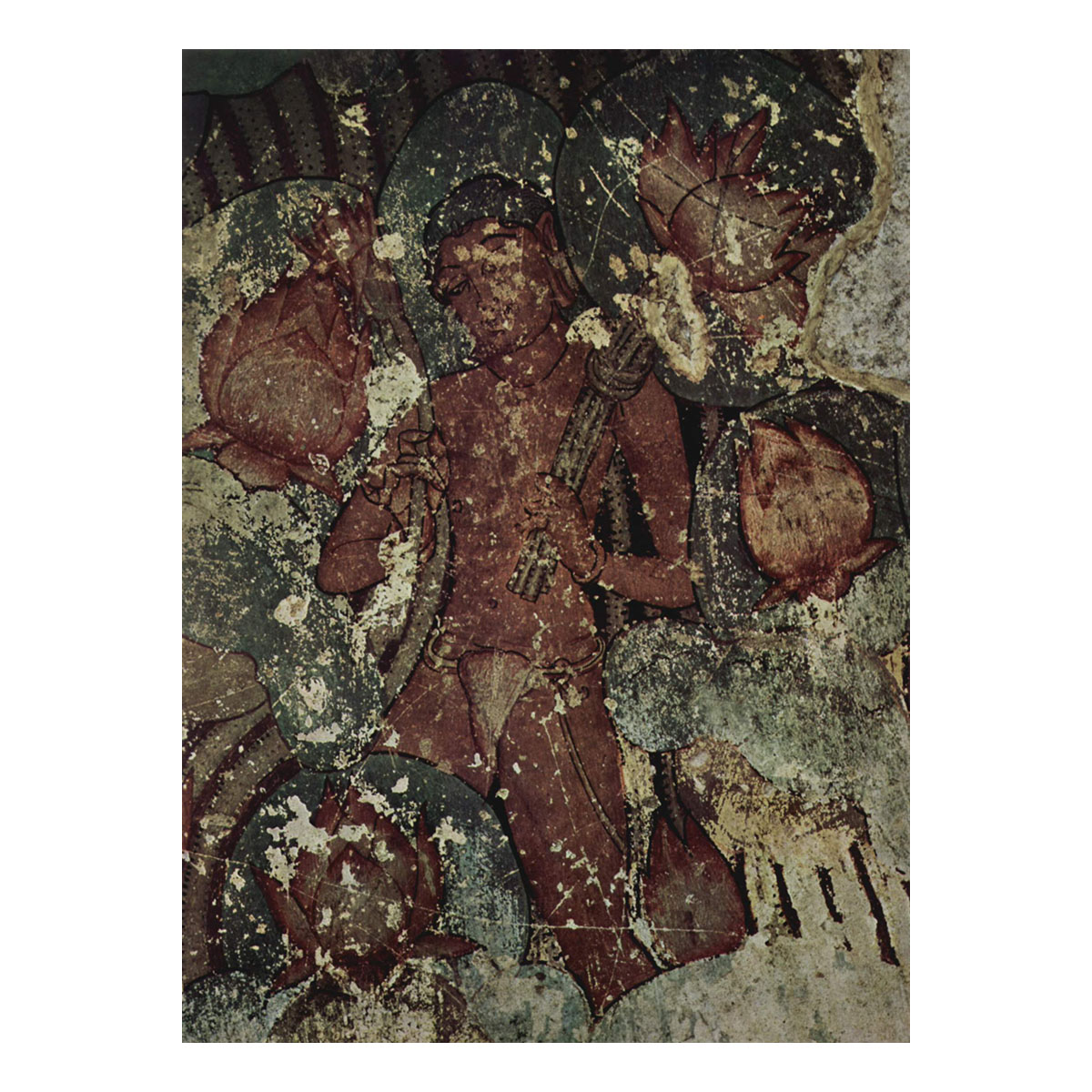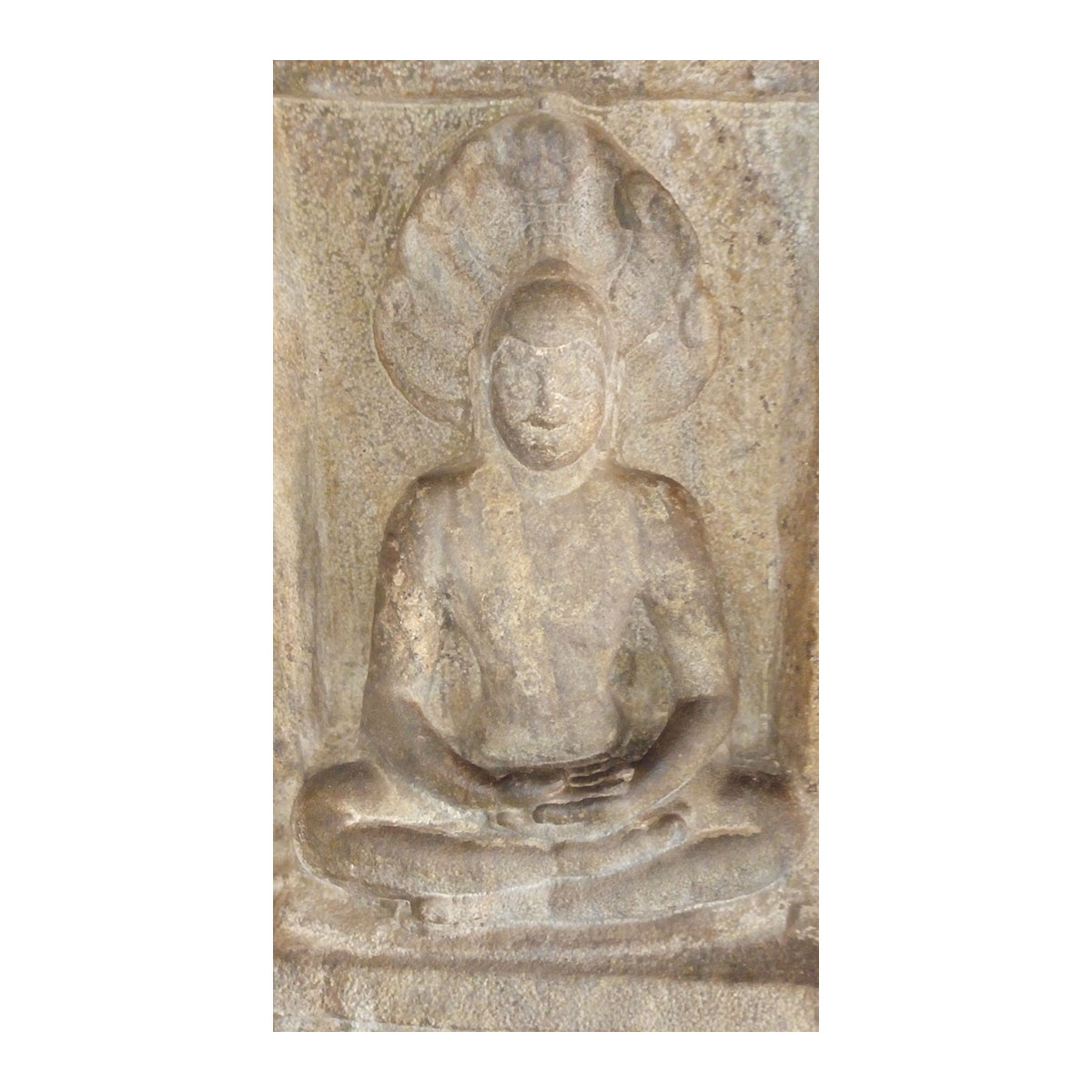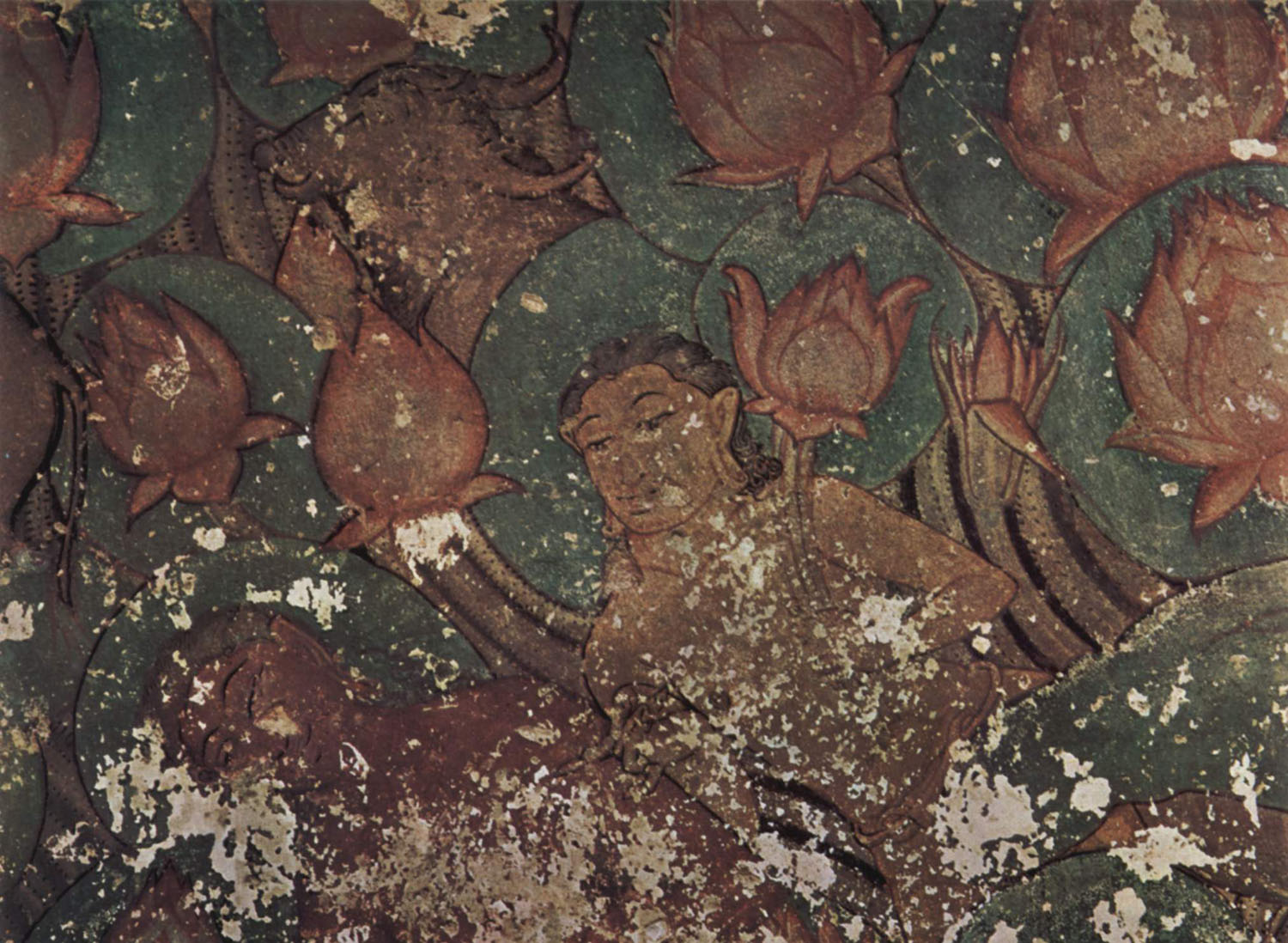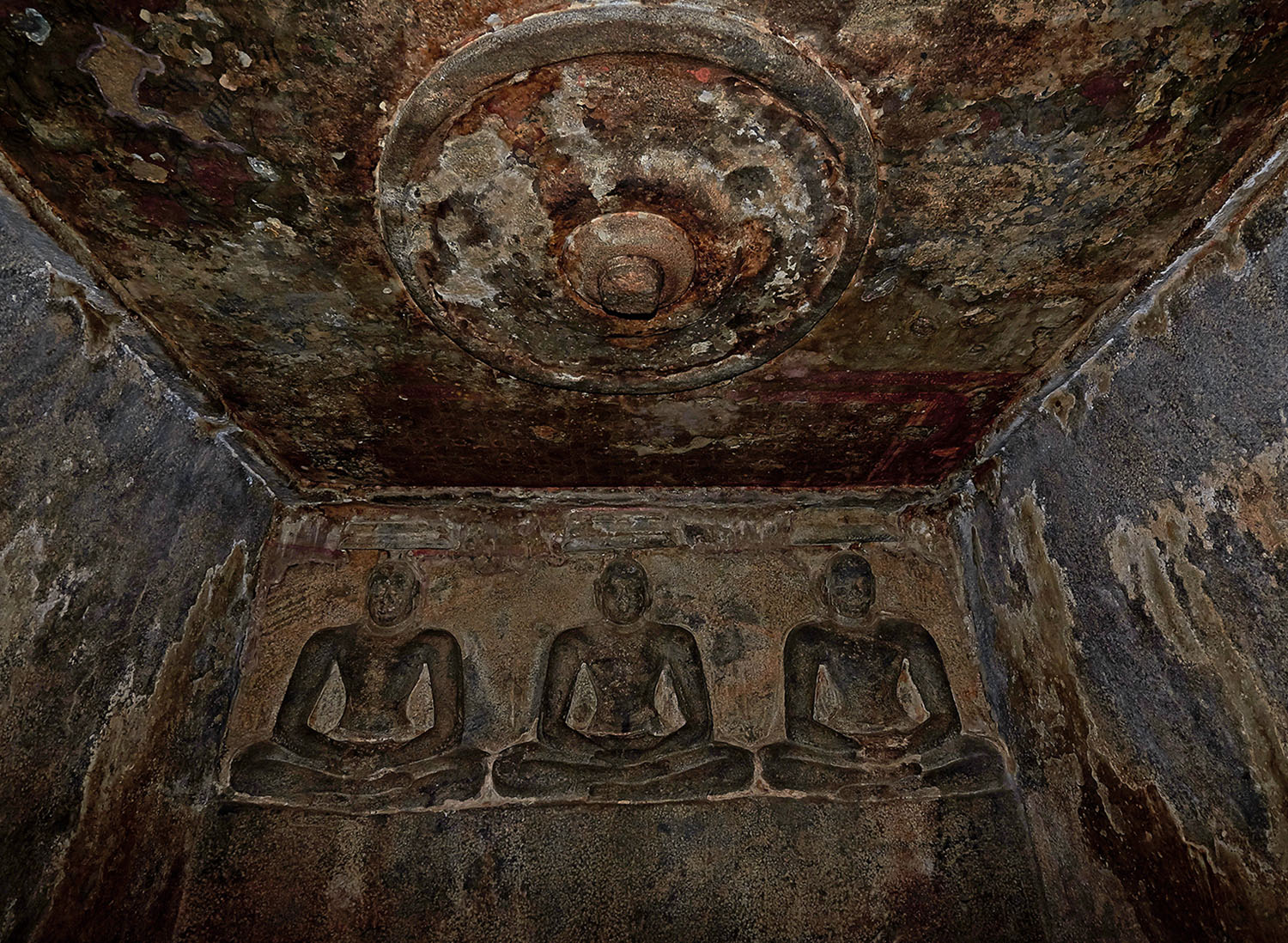ARTICLE
Cave Art at Sittanavasal
The relief sculptures and mural paintings found in the cave temple at Sittanavasal, also known as Arivar Koil (“temple of the Jina”), in the Pudukkottai district of Tamil Nadu. Dated between 500 CE and 800 CE, the cave contains the earliest examples of Jain frescoes in south India. Several Tamil-Brahmi inscriptions within and near the temple attest to the site being a Jain centre from as early as the 100 BCE to around 900 CE. Although there is no evidence to definitively date and attribute the construction of the cave, some scholars believe it to have been first excavated during the reign of Mahendravarman I (r. 580–630 CE), before his conversion from Jainism to Shaivism, citing the cuboidal pillars that are characteristic of early Pallava architecture. Sittanavasal is home to other important sites such as Ezhadipattam, a natural rock shelter containing polished rock beds for Jain monks performing austerities; the Navach-chunai or Jambulingam temple, a rock-cut Shiva shrine submerged under a tarn; and a scattering of megalithic monuments, such as cists, burial urns and stone circles from 300–100 BCE.
The name Sittanavasal is of contested etymology. Some claim that it is of Sanskrit-Prakrit origin (the latter being the preferred language of Jains) and is derived from the compound Siddhaanam vaasah or siddhana-vaasa, both translating to “the abode of great saints.” Others have proposed that it is likely a corruption of the Tamil Chirrannalvaayil or Chiru-Annalvaayil, meaning “smaller Annalvayil,” in reference to the town Annalvayil on the outskirts of which the hill is located.
In niches on the lateral walls of the ardhamandapa are reliefs of figures seated in a cross-legged meditative pose: In the northern niche is the Tirthankara Parshvanatha, under the characteristic canopy of a many-hooded serpent, identified in an inscription on an abutting pillar as Ulokaditan or “ruler of the world.” In the southern niche, the figure seated under a parasol is of unclear identification, with an inscription on the corresponding pillar only indicating the designation of Sri Tiruvasiriyam or “revered teacher,” suggesting that the figure may not be a Tirthankara at all. On the back wall of the inner chamber is a row of similarly seated figures, the northern two of which are under double umbrellas. The naturalistically depicted figures are unclothed and, while delicately rendered, are devoid of details or identifying features, which may have been added by painting the sculptures.
The murals of the cave, though only fragmentary, have a clear thematic programme. Considered a successor of the Buddhist Ajanta and Bagh styles, it differs crucially in that it is Jain in affiliation and it has been rendered using the fresco technique of painting on wet lime plaster, rather than on dry plaster. The principal colours, made using vegetable and mineral pigments, are black, blue, green, (vermillion and ochre) red and (ochre and bright golden) yellow. Applied with minimal shading, the colours red and green were predominantly used for backgrounds, while ochre red or yellow were used for skin tones. The most prominent motif is the lotus plant, as lotus offerings were customary and considered auspicious, found intertwined on the capitals and corbels of the pillars and on the ceilings above the niche figures in the pillared hall. Other notable frescoes can be seen on the two pillars and the ceilings of the ardhamandapa and garbhagriha.
The ceiling murals depict scenes from Jain mythology, the largest and most elaborate of which is a tank or pond of lotuses in the ardhamandapa. This is believed to represent Katika-Bhumi — the second realm enroute to gaining admission into the celestial hall of the Tirthankaras, the Samavasarana — and is shown teeming with fish and wading birds and animals, such as geese, buffaloes, elephants and crocodiles. Two men, thought to be bhavyas or “good ones”, wade through it collecting their lotus offerings to be made at the divine hall. This mural is surrounded by an intricate, geometrical pattern, and is repeated in its entirety in the garbhagriha as well.
On the front of the southern and northern pillars of the hall, are mural images of two dancing apsaras (celestial maidens) bare from the waist up and decked out in flower garlands, necklaces and other ornaments. The one on the northern pillar has her left arm stretched across her chest with fingers pointed down in the gaja hasta mudra, and the right hand held up in the pataka mudra. The other on the southern pillar has her left arm stretched out to her side in what some scholars believe to be the ardharechita karana, one of many poses described in the Natyashastra. On the inner side of the southern pillar are the faces of two figures: one a male adorned with earrings and a crown; the other a female with indistinct features, presumed to be similarly adorned. There has been much speculation about the identity of these figures, although it is generally accepted that the male figure is one of the two rulers under whose patronage the Jain cave temple was built and decorated: Pallava king Mahendravarman I (as seen in a stylistically similar relief in Mahabalipuram), or the Pandya king Srimara Srivallabha. The female figure is believed to be a queen, whose identity is more difficult to confirm.
The murals and inscriptions were first reported in 1904 in the Annual Report of Epigraphy. They were subsequently documented by others, but brought to the attention of the wider public primarily by Jouveau Dubreuil in his monograph Fresco Painting at Sittanavasal, published in collaboration with iconographer Gopinatha Rao in 1920. Following its discovery, efforts were taken to prevent vandalism and preserve the existing murals, supported and sponsored sometimes by heads of state, such as the Maharaja of Pudukkottai. Arivar Koil and the surrounding sites of interest are under the protection of the Archaeological Survey of India.
Bibliography
Our website is currently undergoing maintenance and re-design, due to which we have had to take down some of our bibliographies. While these will be re-published shortly, you can request references for specific articles by writing to hellomapacademy@map-india.org.










